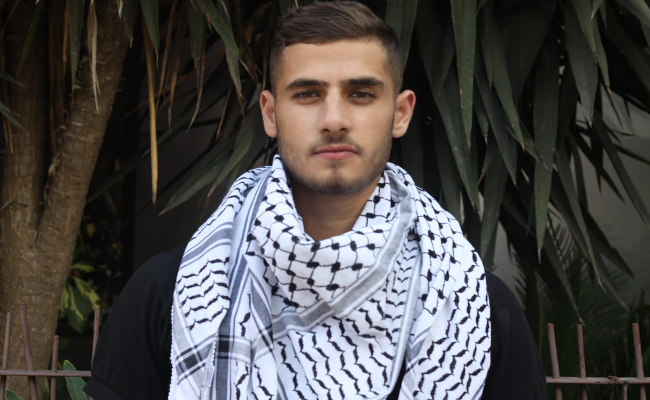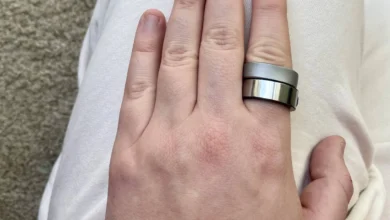Kuffeye: The Traditional Scarf with a Modern Twist
Understanding the Cultural Significance and Fashion Appeal of the Kuffeye and Keffiyeh

The Kuffeye (also known as Keffiyeh) is not just a simple piece of cloth; it carries with it centuries of cultural significance and has evolved into a powerful fashion statement in the modern world. This traditional Middle Eastern scarf, originally designed for protection against the harsh desert climate, symbolizes resilience, identity, and heritage. Today, it transcends its historical roots, representing both cultural pride and a fashionable accessory worn by people worldwide. In this article, we will explore the rich history, cultural significance, and modern-day appeal of the kuffeye, examining how it has become a symbol of both tradition and contemporary style.
Introduction to the Kuffeye
The kuffeye, also commonly referred to as the keffiyeh, is a traditional Middle Eastern scarf that has been a part of the region’s culture for centuries. Its origins can be traced back to ancient Mesopotamia, where it was initially used by farmers and shepherds to protect themselves from the sun, wind, and dust. The scarf is typically made of cotton or a cotton blend, with a distinctive checkered pattern that has become synonymous with Middle Eastern heritage.
The Historical Significance of the Kuffeye
Historically, the kuffeye was more than just a practical garment. It was a symbol of status and identity within various Middle Eastern societies. Different patterns and colors of the scarf were used to signify tribal affiliations, social status, and regional origins. For example, in Palestine, the black-and-white checkered kuffeye is most commonly associated with Palestinian identity and resistance, while other regions may favor different color combinations. The kuffeye became a symbol of solidarity and nationalism during various political movements, further embedding it into the cultural fabric of the region.
The Kuffeye in Modern Times
In contemporary times, the kuffeye has seen a resurgence in popularity, not only in the Middle East but around the world. It has been adopted by various fashion designers and brands, who have reinterpreted the traditional scarf to fit modern aesthetics. Celebrities and influencers have also played a role in popularizing the kuffeye, wearing it as a statement piece that adds both style and a sense of cultural awareness to their outfits.
However, the global popularity of the kuffeye has also sparked debates about cultural appropriation. While some argue that the widespread adoption of the scarf dilutes its cultural significance, others see it as a way to raise awareness and appreciation for Middle Eastern heritage. Regardless of these debates, the kuffeye remains a powerful symbol of tradition and modernity, embodying the resilience and adaptability of the cultures it represents.
Understanding the Keffiyeh
While “kuffeye” is often used interchangeably with “keffiyeh,” it is essential to recognize the slight differences in terminology and usage. The keffiyeh is the broader term, encompassing various regional styles and names for the traditional scarf. The word “keffiyeh” is more commonly used in Western contexts, while “kuffeye” is a variant that may be preferred in specific regions or by particular communities.
The Cultural Symbolism of the Keffiyeh
The keffiyeh is deeply ingrained in Middle Eastern culture, symbolizing not only practical utility but also a deep connection to the land and people. It is often worn during significant cultural events, such as weddings, religious ceremonies, and national celebrations. The scarf is also used as a symbol of resistance and solidarity in political contexts, most notably in the Palestinian struggle for independence.
The keffiyeh’s symbolism extends beyond the Middle East, as it has been adopted by various social movements worldwide. In these contexts, the keffiyeh is often worn as a symbol of resistance against oppression and a call for social justice. Its checkered pattern has become iconic, representing a global struggle for freedom and equality.
The Keffiyeh in Global Fashion
The keffiyeh’s journey into global fashion began in the late 20th century when it was adopted by various subcultures in Europe and the United States. Punk and alternative fashion scenes embraced the keffiyeh as a symbol of rebellion, while high-fashion designers began incorporating the scarf into their collections. Today, the keffiyeh is a staple in many wardrobes, worn not only for its cultural significance but also for its versatility as a fashion accessory.
The keffiyeh’s global popularity has led to various reinterpretations of the traditional scarf. Designers have experimented with different materials, colors, and patterns, creating new versions that appeal to a broader audience. However, these modern adaptations often retain the keffiyeh’s distinctive checkered pattern, paying homage to its cultural roots while adapting it to contemporary fashion trends.
How to Wear the Kuffeye and Keffiyeh
The kuffeye and keffiyeh can be worn in various ways, depending on the occasion and personal style. Traditionally, the scarf is folded into a triangle and draped over the head and shoulders, with the ends tied at the back or left hanging loosely. This style provides protection from the sun and wind while also creating a distinctive look that is instantly recognizable.
In modern fashion, the kuffeye and keffiyeh can be styled in numerous ways. It can be worn as a neck scarf, wrapped around the head as a turban, or draped over the shoulders as a shawl. The versatility of the scarf allows it to be incorporated into both casual and formal outfits, adding a touch of cultural flair to any ensemble.
Traditional Styles
Head Covering: The traditional method involves folding the scarf into a triangle and placing it over the head, with the ends draped around the shoulders. This style is often secured with an agal, a black cord that holds the scarf in place.
Desert Wrap: In desert environments, the kuffeye is often wrapped around the head and face, leaving only the eyes exposed. This style provides maximum protection against sand and sun.
Modern Styles
Neck Scarf: The kuffeye can be folded into a narrow band and wrapped around the neck, with the ends either tucked in or left hanging. This style is popular in colder climates and adds a stylish touch to winter outfits.
Shawl: The kuffeye can be draped over the shoulders like a shawl, providing warmth and adding a layer of texture to any outfit. This style is often seen in bohemian and eclectic fashion.
The Ethical Considerations of Wearing the Kuffeye and Keffiyeh
As the kuffeye and keffiyeh have become global fashion items, it’s important to consider the ethical implications of wearing these culturally significant scarves. While fashion is a form of expression, it is essential to wear the kuffeye with respect and awareness of its cultural roots.
Cultural Appropriation vs. Appreciation
Cultural appropriation occurs when elements of a culture are borrowed or used by another culture without proper acknowledgment or understanding. In the case of the kuffeye, wearing the scarf without understanding its cultural significance or the history it represents can be seen as disrespectful.
On the other hand, cultural appreciation involves recognizing and honoring the cultural significance of the kuffeye while wearing it. This can be done by educating oneself about the scarf’s history, understanding the context in which it is worn, and acknowledging its importance to the cultures that created it.
Supporting Ethical Fashion
When purchasing a kuffeye or keffiyeh, it’s essential to consider the source of the product. Many traditional kuffeyes are handmade by artisans in the Middle East, and purchasing from these sources supports local economies and preserves cultural practices. Conversely, mass-produced versions may not have the same cultural significance and could contribute to the exploitation of traditional designs.
The Future of the Kuffeye and Keffiyeh
The kuffeye and keffiyeh are more than just fashion items; they are symbols of cultural identity, resilience, and heritage. As these scarves continue to gain popularity worldwide, it is crucial to preserve their cultural significance while allowing them to evolve with the times.
The future of the kuffeye and keffiyeh lies in balancing tradition and modernity. As fashion continues to embrace cultural diversity, these scarves will likely remain a staple in both traditional and contemporary wardrobes. By understanding and respecting the cultural significance of the kuffeye, we can ensure that it continues to be a meaningful symbol for generations to come.
Conclusion
The kuffeye, or keffiyeh, is a traditional Middle Eastern scarf that carries deep cultural significance and has evolved into a global fashion symbol. Its history is rich with meaning, representing both practical utility and cultural identity. Today, the kuffeye is embraced worldwide as a versatile fashion accessory, while still holding its roots in Middle Eastern culture.
As we continue to wear and appreciate the kuffeye and keffiyeh, it is essential to do so with respect and understanding. By recognizing the cultural significance of these scarves, we can honor their heritage while incorporating them into our modern lives. Whether worn for cultural reasons or as a fashion statement, the kuffeye remains a powerful symbol of tradition, resilience, and style.


